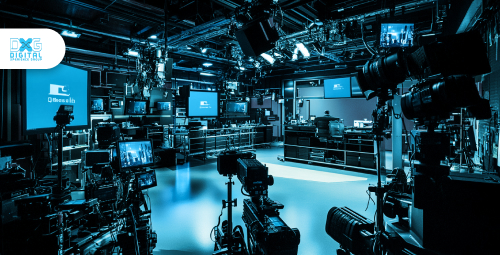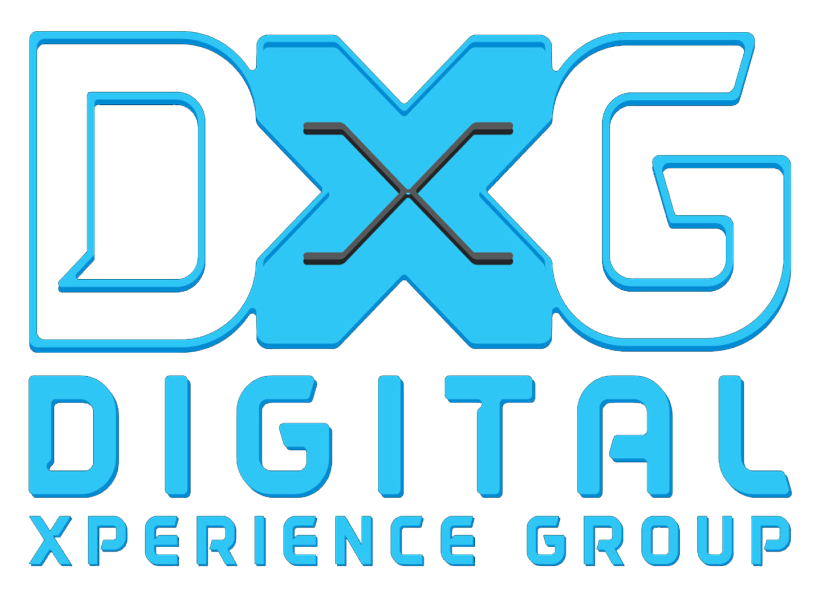The Role of Production Management in Large Scale Events

March 25, 2025
The Role of Production Management in Large Scale Events
Life is a sum up of moments—some ordinary, others extraordinary. At their best, large-scale events can create unforgettable moments that stay with us, shift perspectives, and leave a lasting impression. However, crafting an event that truly connects, one that people talk about, feel deeply, and remember long after, is no simple task.
Behind every successful event is a finely tuned system of plans, teams, and decisions, all working perfectly. Here comes production management—not just as a logistical tool, but as the driving force that transforms complexity into something extraordinary. How does production management turn a vision into a flawless, memorable event? Let’s take a closer look and uncover the magic behind the scenes.
(I) Strategic Planning and Coordination For Flawless Event Execution
Strategic planning and coordination require precision, but production management handles the workflow that transforms a vision into reality. Here’s how production management achieves it:
Defining Event Objectives
Start by pinpointing the purpose of the event—whether it’s to educate, entertain, promote, or inspire. Objectives should be specific and measurable, such as achieving a set number of attendees, showcasing a product launch, or raising a defined amount of funds. With well-defined goals, every decision, from venue selection to technical requirements, will align with the event’s purpose, minimizing wasted resources and maximizing impact.
Developing a Detailed Timeline
A comprehensive timeline keeps the production process on track and ensures no detail is overlooked. Break the timeline into key milestones, starting from initial planning to the final wrap-up. Include deadlines for securing venues, hiring vendors, designing promotional materials, and conducting rehearsals.
Build in buffers for unexpected delays—whether it’s last-minute permit issues or shipment delays. Advanced project management tools, such as Asana or Trello, can make this process smooth and ensure accountability across the team.
Assembling a Skilled Team
Well-Organized Team: The right team makes all the difference in executing a large-scale event. Focus on assembling a group with diverse expertise such as technical directors for sound and lighting, logistics coordinators for scheduling and transportation, and creatives for branding and design.
Dedicated Event Production Agency: Leadership and communication skills are just as critical as technical know-how. For large-scale events, consider hiring experienced freelancers or partnering with agencies that specialize in event production. Establish clear roles and reporting structures to eliminate confusion and maintain momentum throughout the planning process.
(II) Strategic Budgeting and Financial Oversight To Achieve Big Impact

Tight financial oversight isn’t about cutting corners; it’s about making every dollar work harder. Let’s break down how you can make every dollar count:
Creating a Detailed Budget
List every expense—venue fees, technical equipment, staffing, marketing, permits, and contingency funds. Account for both fixed and variable costs to avoid surprises. Use software like Microsoft Excel for real-time updates on spending. Don’t just plan for what’s likely; include a buffer for unexpected challenges like vendor changes or equipment repairs.Implementing Cost Control Measures
Track every dollar with tools like QuickBooks or Zoho Expense. Renegotiate vendor contracts to squeeze out hidden value. Prioritize spending by cutting non-essential features—think about what directly impacts the audience’s experience versus “nice-to-haves“ to retain control over the budget yet make the event successful.Securing Sponsorships and Partnerships
Target sponsors whose audience aligns with your event. Build a pitch focused on value: on-site branding, social media exposure, and direct access to attendees. Use current trends like the $68 billion corporate sponsorship market to show how companies are doubling down on live events. Make partnerships mutually beneficial, so, invite them to participate actively, not just invest passively.
(III) Selecting The Right Venue and Logistics To Shape The Event
Selecting the right venue and managing logistics are pivotal in orchestrating a successful large-scale event. This involves :
Assessing Venue Requirements
Choosing a venue goes beyond aesthetics; it must meet the event's scale and technical needs. Consider the following:
Capacity and Layout: Ensure the venue can comfortably accommodate your expected pattern dance and offers a layout conducive to your event's activities.
Accessibility: The venue should be easily reachable for attendees, with considerations for public transportation and parking facilities.
Technical Capabilities: Verify that the venue supports your technical requirements, such as audio-visual equipment, lighting, and internet connectivity.
Amenities and Services: Assess the availability of essential amenities like restrooms, catering facilities, and on-site support staff.
Coordinating Transportation and Accommodations
Efficient transportation and comfortable accommodations are crucial for attendees, speakers, and performers:
Transportation: Arrange for shuttle services, provide clear directions, and consider traffic patterns to ensure timely arrivals. For large events, coordinating with local transportation authorities can manage traffic flow and parking.
Accommodations: Partner with nearby hotels to secure room blocks at negotiated rates. Ensure a range of options to cater to different preferences and budgets.
Special Needs: Make provisions for attendees with disabilities by ensuring accessible transportation and lodging options.
Managing Permits and Compliance
Adhering to permits and regulatory compliance is essential to avoid legal issues:
Permits: Determine the necessary permits for your event, which may include assembly permits, health permits for food service, and special permits for activities like fireworks.
Regulations: Familiarize yourself with local laws regarding noise ordinances, occupancy limits, and safety codes. Compliance ensures the safety of attendees and the legality of the event.
Timelines: Apply for permits well in advance, as approvals can take time. Some permits may require submission months ahead of the event date.
(IV) Turning Vision Into Reality Through Technical Production and Design

Mastering technical production and design is crucial for delivering an impactful event experience. This involves planning audio-visual elements, innovative stage and set design, and rigorous rehearsals to ensure flawless execution.
Audio-Visual Setup
A well-executed audio-visual (AV) setup is essential for engaging attendees. Key considerations include:
Sound System: Choose an audio system that matches the venue's size and acoustics. Line array systems are effective for large venues due to their ability to distribute sound evenly. Position speakers strategically to avoid echo and feedback, ensuring clear audio throughout the space.
Visual Displays: Utilize high-resolution screens or projectors to display content. Ensure that screens are placed at appropriate heights and angles for optimal visibility. Incorporate interactive elements like touch screens or live polling to enhance engagement.
Lighting: Design lighting that complements the event's mood and theme. Dynamic lighting can highlight key moments and direct audience attention effectively. To get more insights, check out Top Event Audio Visual Trends to Watch in 2024.
Stage and Set Design
Theme Consistency: Ensure that the stage design reflects the event's branding and message.
Sustainability: Use eco-friendly materials and reusable components in your set design to promote sustainability.
Innovative Elements: Incorporate unique features such as dynamic backdrops, artistic flooring, or flexible layouts to make the stage visually appealing.
Rehearsals and Technical Checks
Thorough rehearsals are vital to ensure all technical aspects function smoothly:
Full Run-Throughs: Conduct complete rehearsals with all presenters and performers to identify and address any issues.
Equipment Testing: Test all AV equipment under event conditions to confirm reliability. Develop backup plans for potential technical failures, such as spare equipment or alternative presentation methods.
(V) Marketing and Promotion For Maximum Engagement
Strategic marketing ensures your event captures attention and drives attendance. Focusing on these factors step by step can make an impact:
Developing a Marketing Strategy
Start with clear objectives. Define your audience, craft a compelling value proposition, and allocate resources wisely. Prioritize measurable goals to track success and identify areas for improvement.
Utilizing Digital Platforms
Digital tools amplify your event’s reach and engagement:
Social Media: Focus on platforms where your audience is active. Use Facebook Events for RSVPs, Instagram for visual storytelling, LinkedIn for professional networking, and Twitter for real-time updates. 83% of event professionals now rank social media as their most powerful promotional channel.
Email Campaigns: Segment your audience for targeted outreach. Personalize emails with exclusive content, early-bird offers, or VIP perks. High-performing campaigns feature concise, actionable messaging.
Event Websites: Build a clean, responsive site. Showcase key details like schedules, speakers, and interactive elements. Optimize search engines to boost visibility.
Engaging with Media Partners
Press Outreach: Share press kits that highlight your event’s unique elements. Focus on data, visuals, and compelling narratives that stand out.
Media Sponsorships: Offer exposure opportunities, like branded placements or exclusive interviews, in exchange for coverage.
Influencer Partnerships: Collaborate with influencers whose audience aligns with your goals. Authenticity drives higher engagement, especially in niche markets.
(VI) Reducing Disruptions with On-Site Management and Smooth Execution
Effective on-site management ensures your event runs smoothly, maintains the schedule, oversees staff, and handles unexpected issues with agility.
Coordinating Event Flow
Maintain strict adherence to the event timeline. Utilize event management systems to monitor real-time schedules, allowing for quick adjustments as needed. Clear communication with all stakeholders ensures everyone is aligned, minimizing disruptions.
Managing Staff and Volunteers
Assign team leaders to different event sections for accountability and swift decision-making. Regular check-ins with staff during the event help identify and resolve concerns quickly.
Implementing Contingency Plans
Prepare for unforeseen circumstances with predefined solutions. Conduct a thorough risk assessment to identify potential issues and develop response strategies. Establish a contingency team responsible for executing backup plans, ensuring the event remains resilient against unexpected challenges.
(VII) Post-Event Evaluation and Reporting

After the event concludes, it's essential to conduct a thorough evaluation to assess its success and gather insights for future planning.
Gathering Feedback
Attendee Surveys: Distribute post-event surveys promptly to capture participants' impressions while they're fresh. Inquire about various aspects such as content quality, logistics, and overall satisfaction.
Staff and Volunteer Debriefs: Hold debrief sessions with your team to discuss what went well and identify areas for improvement. Frontline personnel often provide insights into operational challenges and attendee experiences that may not be immediately apparent.
Stakeholder Interviews: Engage with sponsors, partners, and key stakeholders to gather their perspectives on the event's execution and outcomes. Their feedback can inform future collaborations and highlight areas needing attention.
Analyzing Performance Metrics
Assessing the event's success involves examining key performance indicators (KPIs):
Attendance and Engagement: Compare actual attendance numbers against targets. Analyze engagement levels through metrics such as session participation rates and social media interactions.
Return on Investment (ROI): Calculate ROI by comparing the event's revenue or value generated against the costs incurred. This analysis helps determine the financial effectiveness of the event.
Lead Generation and Conversion: For events with business objectives, track the number of leads generated and their subsequent conversion rates. This metric indicates the event's effectiveness in driving business opportunities.
Documenting Lessons Learned
Comprehensive Reporting: Compile a detailed report that includes feedback summaries, performance metrics, and analyses. This document serves as a reference for future event planning and decision-making.
Actionable Recommendations: Based on the evaluation, develop clear recommendations for future events. Prioritize areas for improvement and outline steps to enhance planning and execution processes.
Simplify Your Large-Scale Event Management with DXG
Production management is the backbone of every successful event, where thoughtful planning, sharp execution, and adaptability come together. We believe in the power of continuous improvement. Each event offers valuable lessons that can sharpen your strategy and elevate your future endeavors. From setting clear objectives and managing budgets to selecting the right venue and coordinating technical production, we’re here for each critical step to creating a memorable experience.
Stay curious, embrace feedback, and adapt to new challenges—this is our mindset that drives long-term success in event management. Reach out to us with your concerns before your next big event and you’ll not only meet but exceed expectations every time
